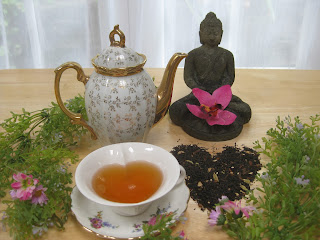Anyone who is asked what their favourite cup of tea is,
always knows! It could be a passing whim,
but usually it’s the old faithful. Maybe
you have a penchant for going green or maybe you like it light? Or perhaps you are one of those who can’t go past a nice
strong cup of tea (often a tea bag will do) with milk and sugar to sink one’s
teeth into or stand a teaspoon in!
Sometimes one might choose a tea that suits their mood? Or even more sophisticated, one that suits their food!
I can’t quite go past a Darjeeling from India – it’s not
quite black but not quite green either but has characteristics of both. It’s got oomph but it’s also delicate. It’s refreshing but has substance. It has
depth but is light.
Darjeeling has elegance and
style.
Tea is such an individual but universal thing – it can be
enjoyed in quiet solitude, or shared with a colleague, close friend or a
lover. It means lots of things to lots
of people and carries you across the globe within seconds of taking your first
sip. Are you able to inhale the mist
from a rocky outcrop? Perhaps you can
imagine yourself in a cafe in Paris dunking madeleines in a cup of thick
syrupy tea? Maybe you might find
yourself drinking in the downpour of a hot Monsoon rain and running for cover
to the smell of boiling milky chai? Or you
maybe you can escape amidst a field of jasmine flowers enjoying all the
heady senses?
Hint: Next time you sit down to your favourite cup of tea, drink
it with all your senses. Make it a
sensorial experience. Each cup offers you
a worldly adventure – see it as a ticket with no set destination as having
already been paid.
Words and image contributed by Tea Master, Suzi van Middelkoop from Tea by the
Sea























.JPG)

